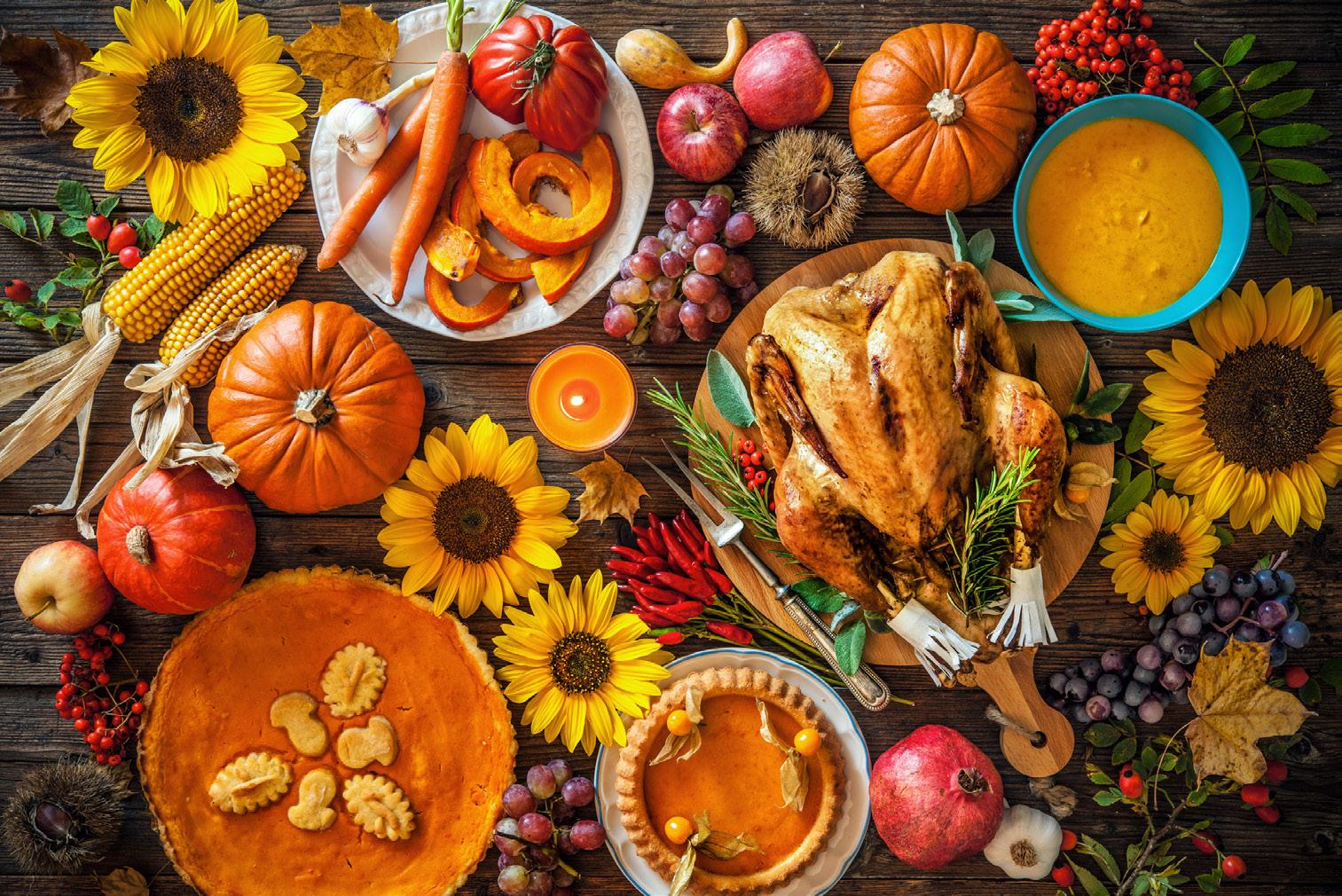
9 minute read
HOME, FARM, & GARDEN p.8 OUT & ABOUT p.16 SIMPLY DELICIOUS
with Rynn Hennings www.thehouseofelynryn.com
For years I assumed “German” chocolate was a mysterious blend of chocolate and secret ingredients only known to the Germans who created it. Imagine my surprise when I learned that German chocolate is an American product developed by men without ties to Germany!
Advertisement
The story began in 1764 when an American physician, Dr. James Baker, and Irish chocolatier John Hannon formed a company named Hannon’s Best Chocolate. Eventually, they developed a signature bitter baking chocolate, leaving it to the cook to add sugar. Fourteen years later, Hannon disappeared at sea when he went to purchase cocoa beans in the West Indies. Baker then bought Hannon’s half of the company and renamed it Baker’s Chocolate. Years later, Baker’s grandson inherited the company and hired Englishman Samuel German, who created a much sweeter chocolate product to use for baking. It was tremendously popular and eventually became such a financial success that his last name was added to the Baker’s box, appearing as German’s Sweet Chocolate. The chocolate gained enormous popularity in the 1950s when a Dallas woman created a dessert called German's Chocolate Cake. The recipe appeared in a Dallas newspaper and was later reprinted by General Foods, who renamed it German Chocolate Cake. Soon the recipe spread around the country and was so popular that it became synonymous with chocolate, coconut, and pecans. Unfortunately, its new name gave the false impression that it was German. Since then, the cake version has spawned recipes for desserts such as cupcakes, brownies, cookies, layer bars, and blondies. This German chocolate cupcake recipe has cream of coconut in the chocolate cake, toasted coconut and toasted pecans in the filling, and a chocolate ganache buttercream frosting.


GERMAN CHOCOLATE CUPCAKES

Servings: 26 Prep Time: 60 minutes Cook Time: 17-21 minutes
Ingredients for Cupcakes
• 4 ounces Baker’s German’s Sweet Chocolate • 1/2 cup cream of coconut, room temperature (Coco Lopez used) • 2 cups cake flour (or all-purpose flour) • 1/4 teaspoon salt • 1 teaspoon baking soda • 1 cup salted butter, room temperature • 1 1/4 cups granulated sugar • 2 teaspoons vanilla extract • 3 whole eggs + 1 egg white, room temperature • 1 cup whole buttermilk*, room temperature
Ingredients for Filling
• 1 cup sweet, shredded coconut, toasted • 1 cup chopped pecans, toasted • 1/2 cup unsalted butter • 1 cup evaporated milk • 3 large egg yolks, lightly beaten • 1/2 cup brown sugar, firmly packed • 1 pinch salt • 2 teaspoons vanilla
Ingredients for Frosting
• 4 ounces Baker’s German’s Sweet Chocolate • 2 tablespoons heavy cream • 1 tablespoon cocoa powder, sifted
• 3 cups powdered sugar, sifted • 1 pinch salt • 1/2 cup butter, softened • 2 teaspoons vanilla extract
Assembly Supplies
• 1 piping bag • 1 star tip (1M) • 1 small spoon or knife • 1 small spoon or piping tip (for cutting holes into the top of the cupcakes)
Directions for Cupcakes
1. Preheat the oven to 325 degrees F. Place 24 cupcake liners into muffin pans. 2. Add the chocolate and cream of coconut to a microwaveable bowl. Heat in the microwave on high for 30 seconds. Stir.
Heat for another 30 seconds. Stir until the chocolate melts.
Set aside. 3. Mix the flour, salt, and baking soda in a mixing bowl.
Set aside. 4. Use a mixer to beat the butter, sugar, and vanilla until light and fluffy. Add the eggs and egg white, one at a time, and beat after each addition, scraping down the sides of the bowl. 5. Stir in the chocolate mixture and mix until combined. 6. Add the dry ingredients, alternating with the buttermilk and ending with the flour mixture. Do not overbeat. 7. Divide the batter between the cupcake liners. Bake for 17-21 minutes or until a toothpick inserted into a cupcake comes out clean or with crumbs. Do not overbake. Cool in the muffin pan for 10 minutes; then place onto cooking racks to finish cooling. (Leave the oven on to toast the pecans and coconut for the filling.)
Directions for Filling
1. Place the coconut into a 9-inch round baking pan and the pecans into another 9-inch baking pan. Place the pans into the preheated oven for 5 minutes to toast. Stir and bake for 5 more minutes or until the coconut and pecans are lightly browned. Do not over-brown. Set aside to cool. 2. Whisk the butter, milk, egg yolks, sugar, and salt in a medium-sized sauce pan. Heat on low heat, constantly whisking, until the mixture thickens and turns a golden brown. Set aside to cool. 3. Stir in the coconut and pecans.
Directions for Frosting
1. Add the chocolate and cream to a microwaveable bowl to make a ganache. Heat in the microwave on high for 30 seconds. Stir. Heat for another 30 seconds. Stir until the chocolate melts. Set aside to cool. 2. Sift the powdered sugar, cocoa, and salt together. 3. Use a mixer to whip the butter and vanilla until light and fluffy. Add the cooled chocolate ganache and beat until incorporated. Add 1/3 of the sugar mixture at a time, beating after each increment and scraping down the sides of the bowl. Add a little more cream if the mixture is too thick to pipe.
Directions for Assembly
1. Place the star tip into a piping bag with the end cut off. Add the frosting to the bag. Set aside. 2. Use a small, pointed spoon or a piping tip to remove a circle of cake from the middle of each cupcake. Discard the cutout cake. 3. Use the spoon or knife to insert the coconut filling into the hole of each cupcake until it is flush with the top of the cupcake. 4. Pipe icing stars around the outside of each cupcake. Fill the center of the frosting stars with coconut filling. 5. Store cupcakes in an airtight container.


Sweet Tips
*Always shake the buttermilk before pouring it into a measuring cup because it can separate when sitting. For more information, go to houseofelyryn.com

simply delicious
TALKING TURKEY
This Thanksgiving when we are giving thanks for our many blessings, don’t forget to remember our NC turkey farmers. These hardworking farmers aren’t just feeding our families, but many others across the United States and around the world. According to the North Carolina Poultry Federation, NC ranks second nationally in total turkey production raising over 30 million birds a year. My family and I are turkey fans, not just at Thanksgiving, but throughout the year. Considering the average American consumes over 15 pounds of turkey a year, we are not alone. A great meal prep ingredient, cooked turkey is so versatile. Turkey sandwiches are a favorite, but many casseroles and soups also include cooked turkey. When you are tired of traditional Thanksgiving fare, try Turkey Salsa Soup to warm up on a cold November day and to spice up your menu. For a variety of additional turkey recipes, visit https://www.eatturkey.org/recipes/
TURKEY SALSA SOUP
For a quick and easy meal, just dump all the ingredients together and heat. Season with salt and pepper to taste and top with grated cheese if desired.
Ingredients
• 16 oz. (2 cups) chunky salsa, mild or your family’s flavor preference • 2 cups frozen whole kernel corn • 2 (15 oz.) cans black beans, rinsed and drained • 2 cups chopped, cooked turkey • 1 quart (4 cups) low sodium chicken broth • Salt and pepper (preferably freshly ground pepper) • Grated cheddar cheese (optional)
Directions
1. Combine salsa, corn, black beans, turkey, and chicken broth in a large saucepan or Dutch oven. 2. Bring to a boil, then reduce heat and simmer for 5 minutes. 3. Season to taste with salt and black pepper. 4. If desired, top with grated cheddar cheese. 5. For best safety and quality, eat soup within 3 to 4 days or freeze it. And avoid letting soup set at room temperature for more than 2 hours. Cool in a shallow container.
6. Reheat leftover soup until it is steaming hot throughout (165 degrees F.)
Servings: Recipes makes about 2 quarts or four 2-cup servings. Source: University of Nebraska Lincoln Coop Extension, Alice Henneman, MS, RDN



THANKSGIVING TURKEY FOOD SAFETY
Having a turkey on your Thanksgiving table is a timeless American tradition. Use this information when purchasing, preparing, handling and serving your Thanksgiving turkey.
BUYING YOUR THANKSGIVING TURKEY
Fresh Turkey
Check packaging for leaks and separate from other items in the cart Leave turkey in bag and place in a pan or on a tray to prevent dripping Store on bottom shelf of fridge at or below 41ºF
Keep turkey in the freezer (0ºF) until it' s ready to thaw and be cooked Thawing in refrigerator will take ~24 hours for every 5 pounds
Frozen Turkey
If you receive a donated fresh or frozen turkey from a food pantry, non-profit organization, etc. past it's expiration date, it is still safe to eat, if handled and cooked properly.
Thawing
Thaw turkey quickly with the following methods:
Cool water: Submerge in sink or container of cool water, changing every 30 minutes. Allow 30 minutes per pound.
Microwave: Read manual instructions. Remove wrapping. Rotate several times. Cook turkey immediately after thawing. Allow 6 minutes per pound.
Cook: Use method if turkey is partially thawed. Allow at least 50% longer time to cook through.
Preparing
You do not need to wash your turkey. Washing raw poultry won 't kill bacteria, but cooking to the proper internal temperature will. However, when washing, harmful bacteria like Salmonella and Campylobacter can be sprayed up to 3 feet on nearby surfaces. To prevent the spread of bacteria, clean and sanitize utensils and work surfaces and wash hands after preparing raw poultry.
Cooking
When the juices run clear or the turkey is a golden brown color it does not necessarily indicate the turkey is done. The only way to tell is by using a verified food thermometer to check the internal temperature. Poultry, like turkey and chicken, must be cooked to an internal temperature of at least 165ºF for safety. Check temperature in three spots including:
Thickest part of the breast
Innermost part of the wing
Innermost part of the thigh For safety, stuffing must also reach 165ºF checked in multiple places. This could cause the turkey to be cooked to over 165ºF.
To avoid overcooking, consider making stuffing separately
For more information contact ncsafeplates@ncsu.edu | Updated 10.7.21





